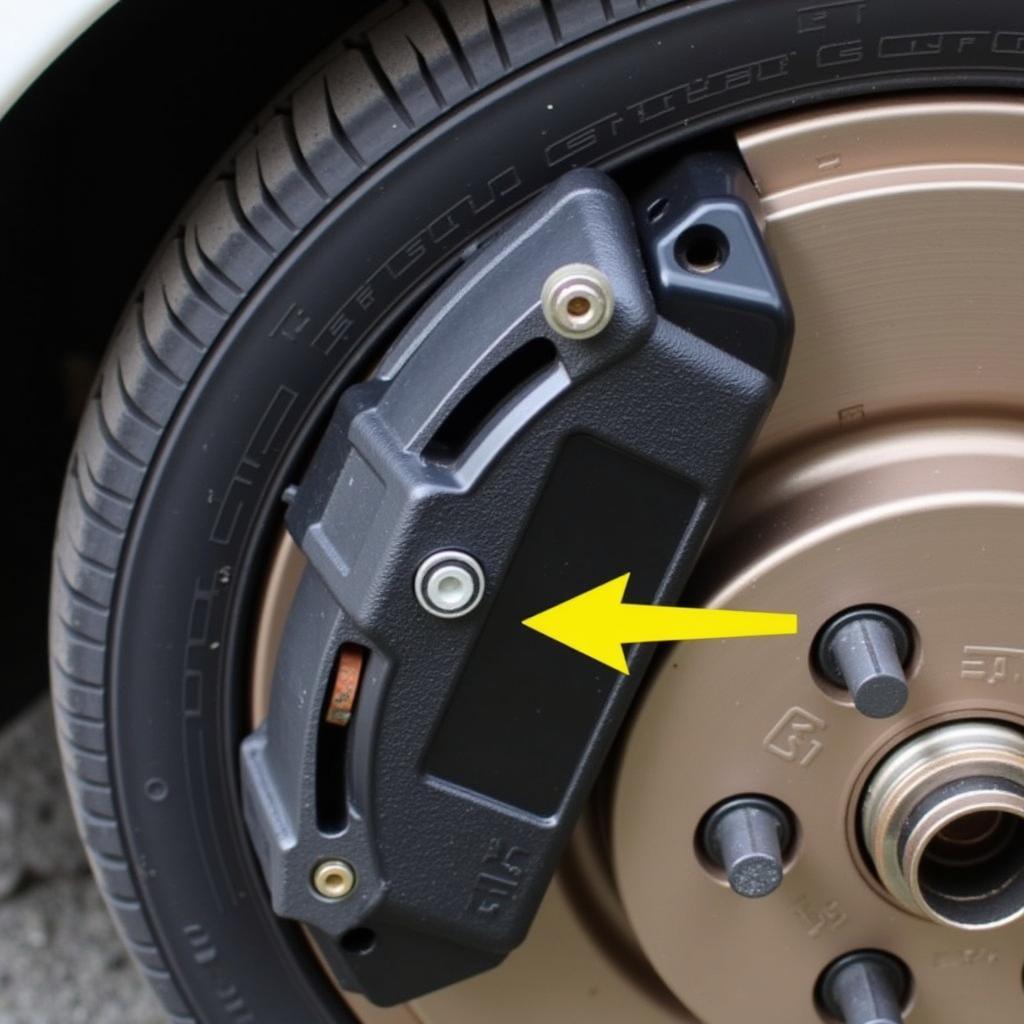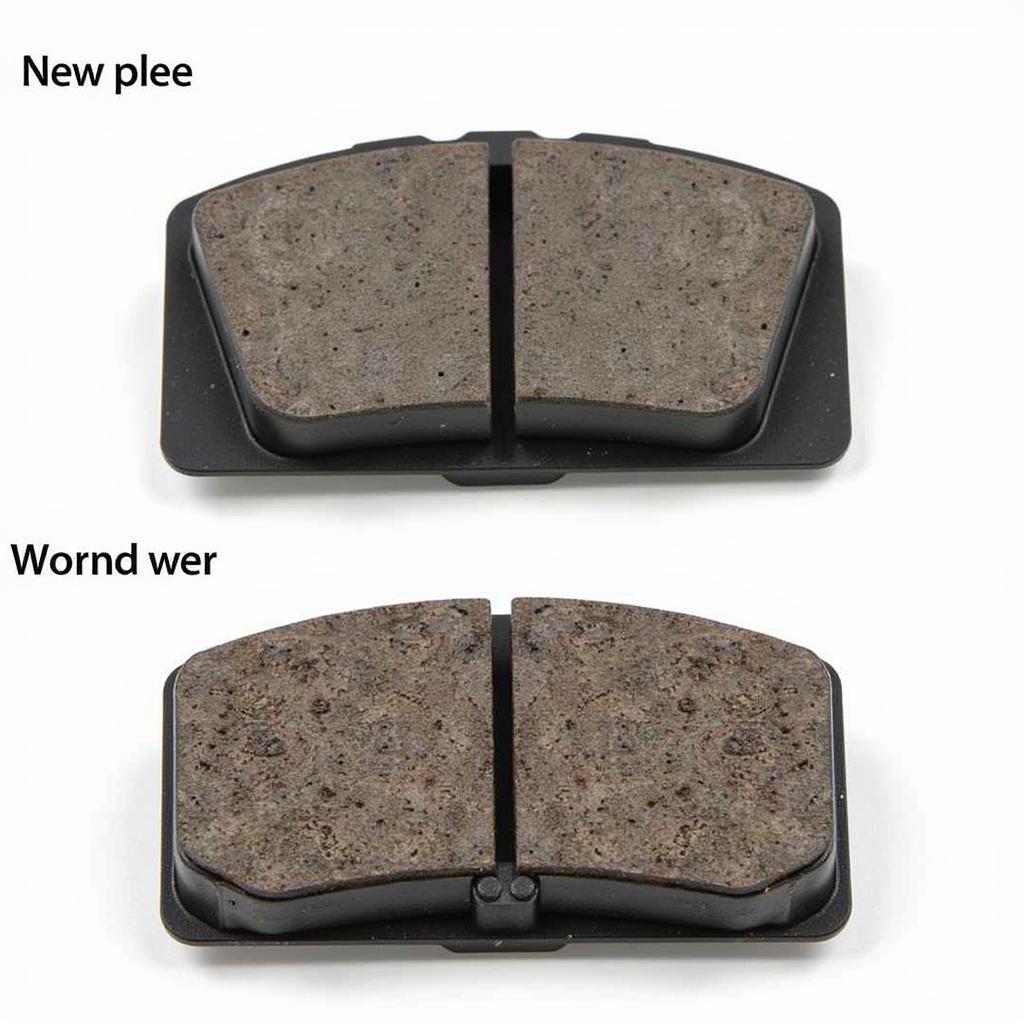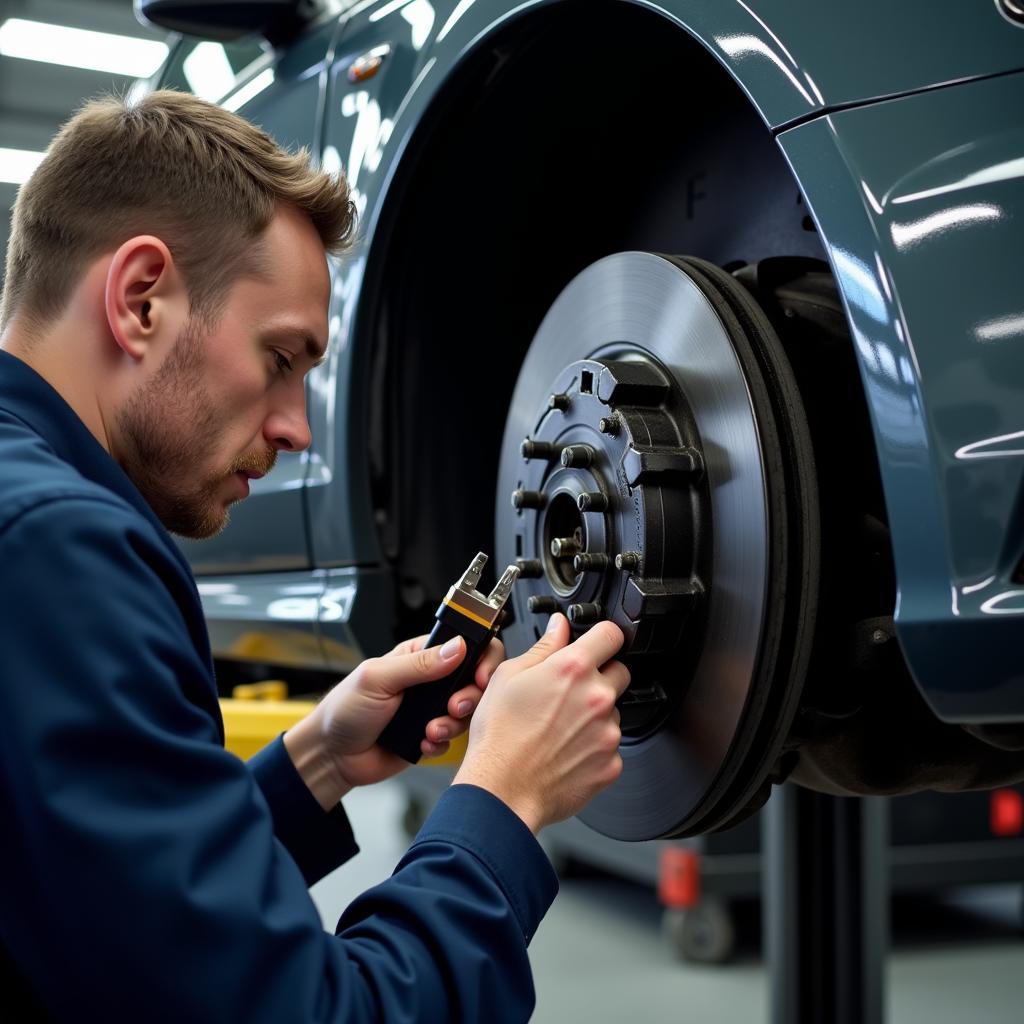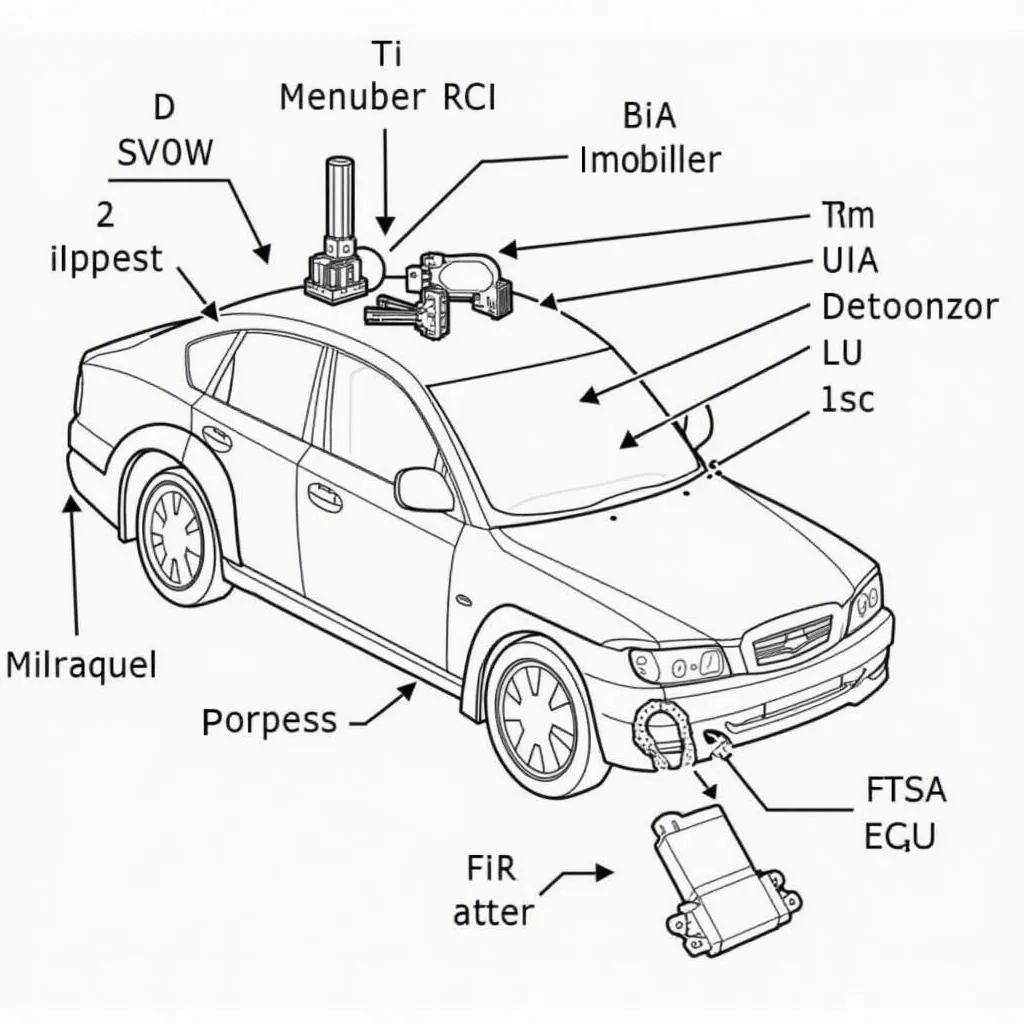The dreaded brake pad warning light on your Audi dashboard – a glowing testament to wear and tear. Whether it’s signaling the front or rear brakes, this light means one thing: it’s time to pay attention. But how can you tell which brakes are wearing down?
This comprehensive guide will walk you through understanding your Audi’s brake pad warning system, determining if it’s the front or rear brakes that need attention, and outlining the steps to address the issue.
Understanding Your Audi’s Brake Pad Warning System
Audi vehicles are equipped with sensors that constantly monitor the thickness of your brake pads. When the pads wear down to a certain level, these sensors trigger the brake pad warning light on your dashboard. This is a clear indication that your brake pads need replacing soon. Ignoring this warning can lead to further damage and compromised braking performance.
 Audi Brake Pad Sensor
Audi Brake Pad Sensor
Is it the Front or Rear Brakes?
While the brake pad warning light is a universal signal, it doesn’t specify whether the front or rear brakes are affected. Here are some ways to determine which set of brakes needs attention:
1. Consult Your Owner’s Manual: Your Audi’s owner’s manual often provides specific instructions or diagrams indicating which set of brakes triggers the warning light.
2. Visual Inspection: If you’re comfortable with basic car maintenance, you can visually inspect your brake pads. Look through the spaces between the wheel’s spokes. You’ll see the brake caliper positioned over a metal disc (the rotor). The brake pad is held within the caliper. If the pad material is significantly thin or you notice metal scraping against the rotor, that’s a sign of wear.
 Worn Brake Pad
Worn Brake Pad
3. Driving Feedback: Pay close attention to your Audi’s braking behavior.
- Front Brake Wear: If you experience vibrations or a pulsing sensation through the brake pedal when braking, it often indicates worn front brake pads.
- Rear Brake Wear: Determining rear brake wear solely through driving feedback can be tricky. However, if your Audi feels less stable during braking or the rear end tends to dip excessively, it might point to rear brake pad issues.
4. Professional Diagnosis: The most accurate way to determine which brake pads need replacement is through a professional diagnosis.
 Audi Brake Inspection
Audi Brake Inspection
What to Do When the Brake Pad Warning Light Comes On
- Don’t Panic: While the warning light indicates a need for attention, it doesn’t mean your brakes are failing immediately. However, prompt action is crucial.
- Schedule an Inspection: Contact a qualified mechanic specializing in Audi vehicles to schedule an inspection as soon as possible.
- Avoid Heavy Braking: Until the issue is diagnosed and addressed, try to anticipate stops and avoid hard braking.
- Address the Issue: Based on the mechanic’s diagnosis, replace the worn brake pads (and possibly rotors). Don’t delay this repair, as driving with severely worn brakes compromises safety.
Preventing Premature Brake Pad Wear
- Smooth Braking Habits: Avoid hard braking whenever possible. Gradual braking puts less strain on your brake pads.
- Engine Braking: When driving downhill or approaching a stop, downshifting to a lower gear allows the engine to help slow down the car, reducing the load on your brakes.
- Regular Maintenance: Adhering to your Audi’s recommended maintenance schedule, including brake inspections, is key to preventing premature wear.
Conclusion
The brake pad warning light in your Audi is a crucial safety feature designed to keep you safe. Understanding its implications and taking prompt action ensures optimal braking performance and peace of mind on the road. Regular maintenance and proactive care are your best defenses against unexpected brake issues.
FAQ
Q1: Can I drive my Audi with the brake pad warning light on?
While you might be able to drive for a short distance, it’s strongly advised against it. Driving with worn brake pads compromises stopping distance and increases the risk of further damage to your braking system.
Q2: How much does it cost to replace Audi brake pads?
The cost varies depending on the Audi model, the type of brake pads used, and labor costs in your area. It’s best to contact a trusted mechanic or dealership for an accurate quote.
Q3: Can I replace my Audi brake pads myself?
While it’s possible, replacing brake pads requires specialized knowledge and tools. It’s generally recommended to have this procedure performed by a qualified mechanic to ensure proper installation and safety.
Q4: How often should I replace my Audi brake pads?
Brake pad lifespan depends on driving habits and conditions. However, a general rule of thumb is to have them inspected every 10,000 miles and replaced as needed.
Q5: Can worn brake pads damage my Audi’s rotors?
Yes, driving with severely worn brake pads can damage the rotors, leading to costly repairs. If your rotors are damaged, they might need resurfacing or replacement.

